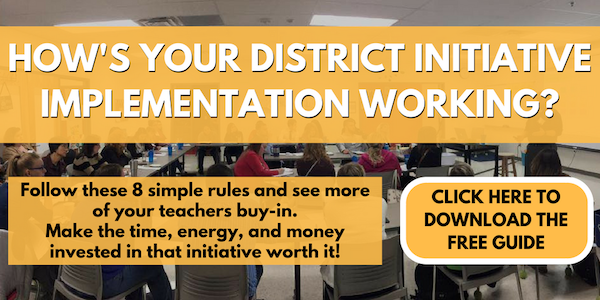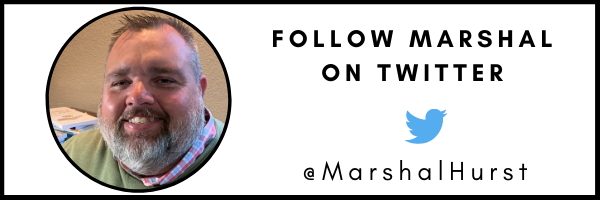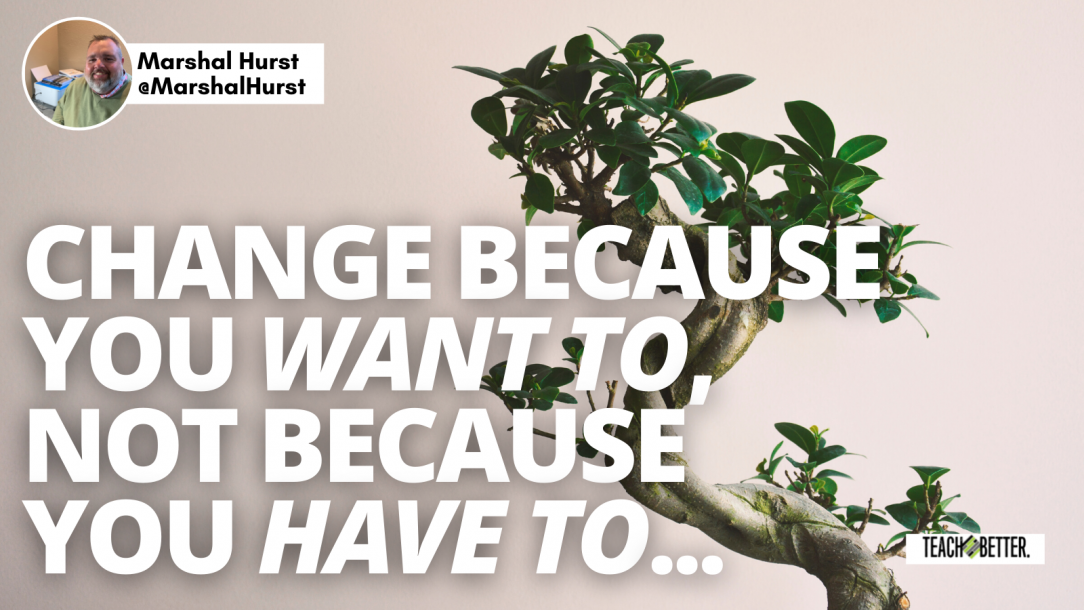TL;DR:
- This post shares a story that demonstrates the importance of making a change because you want to, not because you have to.
- Be proactive, plan, and make decisions based on what is best for students.
Several years ago in a school that I grew up in and was teaching at, a long-time school board member was running for re-election. He was running against a new young candidate that wanted to see some changes in the school based on long-term goals. The candidate also wanted to develop a vision for the school.
I opened up the local paper one week and saw a full-page ad by the incumbent with just seven words, “If it ain’t broke, don’t fix it!”
The statement surprised me, but many stakeholders within the community shared the same belief.
I ran into the board member at the grocery store during the campaign. I mentioned that I saw the ad in the paper, and I asked him, “Do you not change the oil in your truck?” He stated that he changed the oil in the truck whenever it was needed. I then asked about the tires, if he ever changed those out, and he again said he did when needed. I then asked, “If the truck hasn’t broken down, then why do those things?” He was confused by my questions and I explained how I did not agree with his campaign slogan.
Embrace the hard lessons we have had to experience and make the changes that are needed for our students. Don’t stare at the warning light and wait for our instruction to break down. Click To TweetThe school board was making purchases for the school but the items were mainly based on impulse. In one instance, every classroom in the high school had a SMART Board installed. However, there was no training on how to use them or take care of them.
In some cases, teachers did not even have a laptop or computer with the capabilities to handle the software needed to run the SMART Board. The school board had no long-term plan or vision for how the SMART Boards should be implemented to make the biggest impact on student instruction.
I heard Dr. Anthony Muhammed recently use a similar analogy about education. He stated that we sometimes handle education like a car or truck that we are driving when the check engine light comes on.
Everything sounds and feels ok while we are driving, so the light must be a mistake or it is not a big deal. We smile and hope the light eventually goes off. We keep going on down the road until we absolutely know something is not right and by that time, it is usually a much more serious issue that needs to be corrected and is usually more costly.
Think about what happened to each one of us in March of last year. I would say a majority of us, myself included, were driving down the road with the warning light just blazing. Then, BOOM, the whole thing abruptly stopped with steam pouring out the front end. We had some safeguards in place to help, such as online platforms; however, we were still clinging to our “traditions.” Classes went from 100 percent in-person to 100 percent virtual. We had no idea what the word blended even meant and we struggled with it for months.
[scroll down to keep reading]
Many teachers still hold onto traditional ideas about attendance, grades, standards, and courses.
“I have always done it this way” or “students have to learn responsibility” are still familiar phrases. Should we not be asking ourselves what is most important to our students daily? Teachers and administrators set their feet in stone while refusing to budge on change.
We have to take a bigger step towards the needs of our students and become more flexible. What standards should a student absolutely know in your class? Why do the number of right answers on an assignment or test represent a final grade? Should we use growth, understanding, and proficiency as data? We have to do better and change.
I believe we have a unique opportunity when the next school year begins.
A culture of change can be based on your mission and vision. While educators will be relieved to get back to some normalcy in the classroom, I hope that we hold onto changes that have occurred. Regina Owens states that transformation is intentional and occurs in the people and the process.
Embrace the hard lessons we have had to experience and make the changes that are needed for our students. Don’t stare at the warning light and wait for our instruction to break down. Be proactive, plan, and make decisions based on what is best for students.
About Marshal Hurst
Marshal has been working in education for 20 years. He is currently finishing up his fifth year of teaching mat at Northside High School in Fort Smith, AR. Northside is the most diverse school in the state and is completing its first year of being a Model Professional Learning Community. Marshal also spent four years working for the Arkansas Department of Education in the Office of Professional Development. He was the coordinator for the Literacy and Mathematics Design Collaborative developed by the Gates Foundation.
Over the past couple of years Marshal has been heavily involved with the Jostens Renaissance team at Northside. Culture is a huge part to students success and the team works on acknowledging and celebrating every student’s success in an innovative approach. This approach includes a school-wide emphasis on increasing student motivation in the classroom.
While growing up, so many teachers were a huge influence on the success of Marshal’s life and his main goal is to carry that on and try to impact and guide students in the classroom and hallway. He is committed to the belief that students deserve an environment that both supports and challenges them. His biggest reward is seeing his students find their place and voice as their confidence grows.



